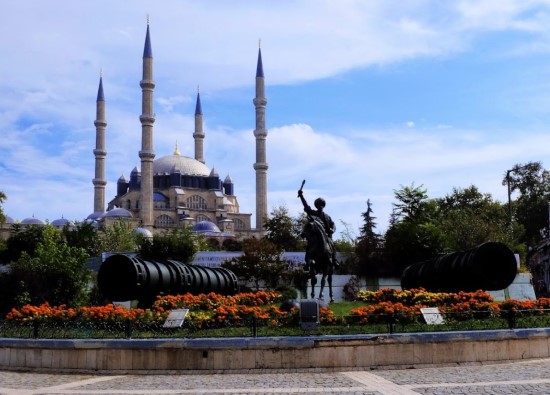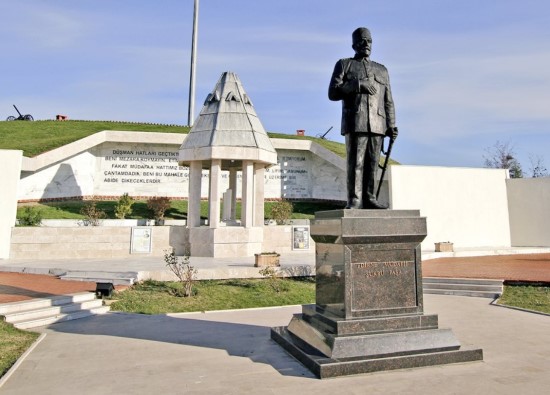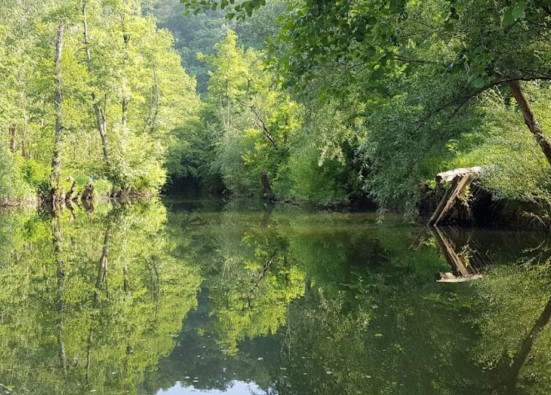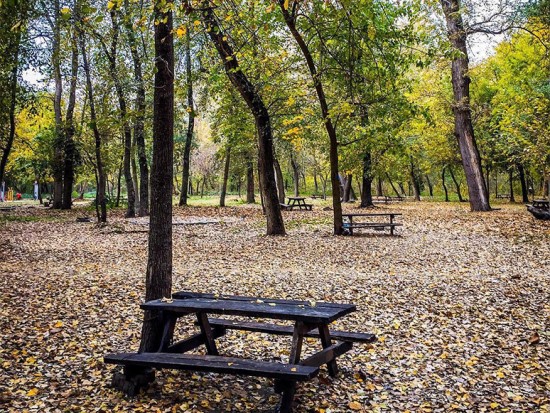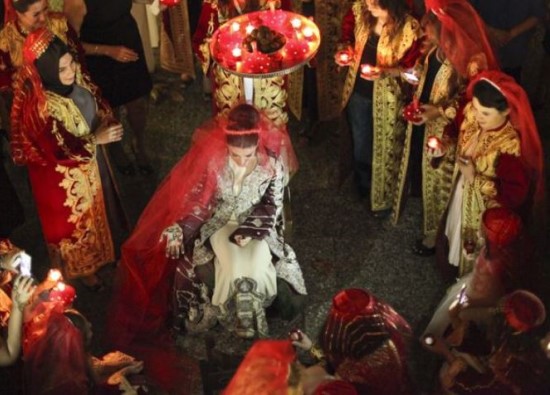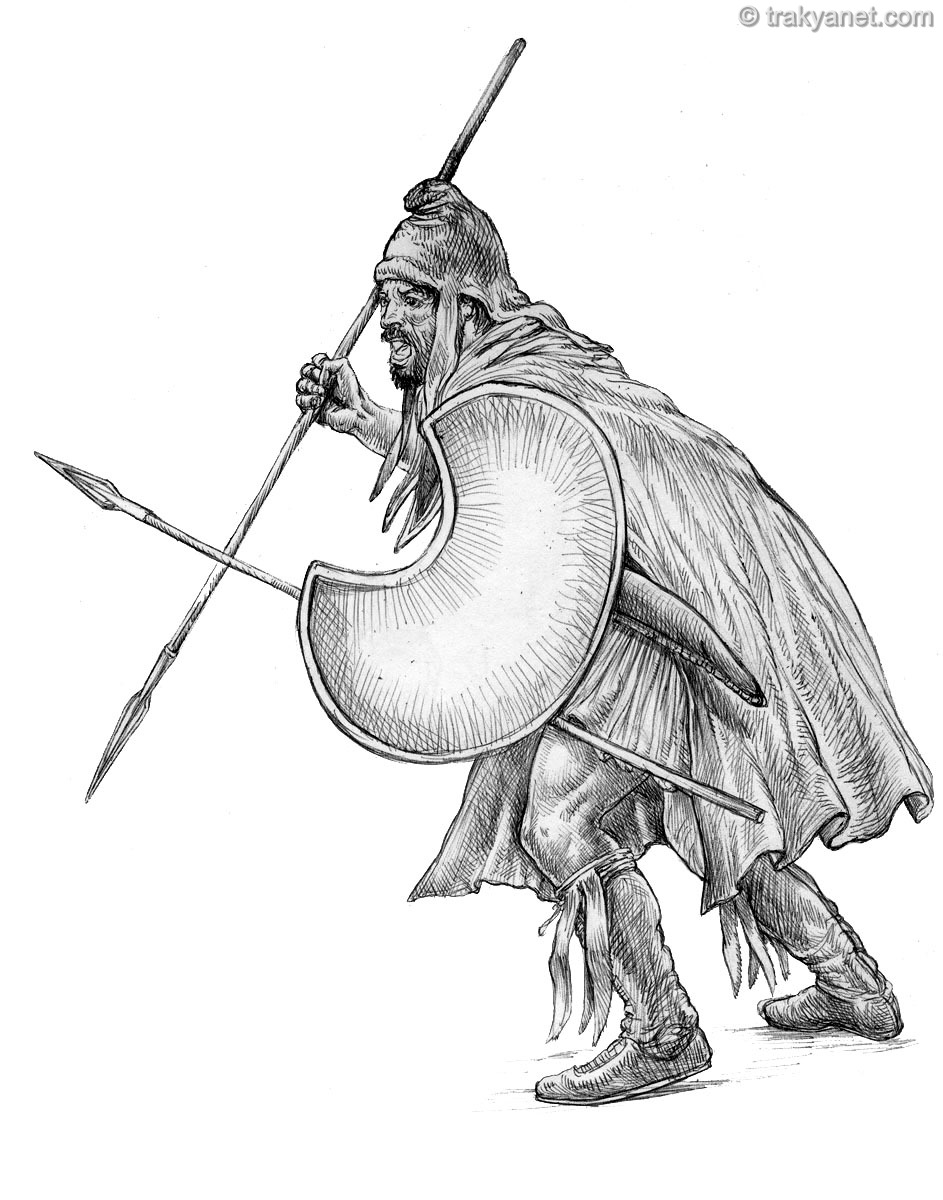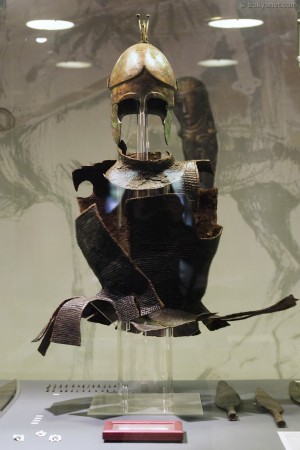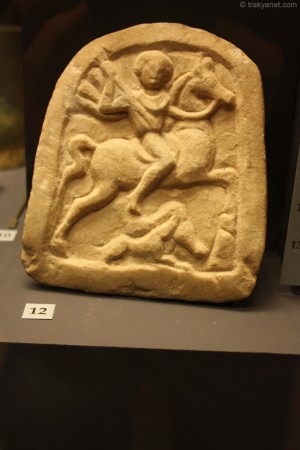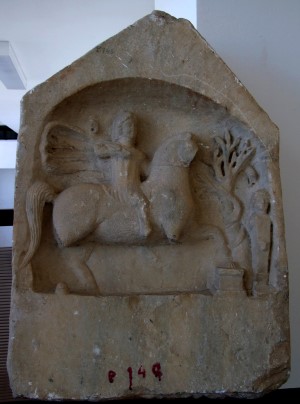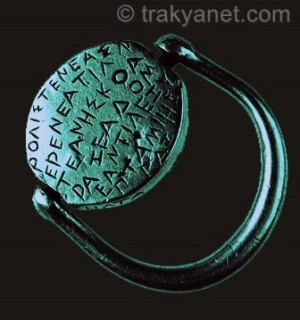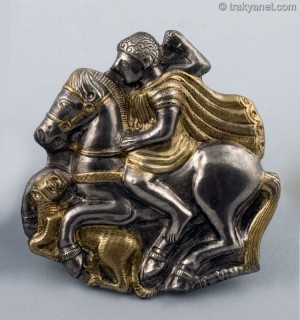In the first decades of the 12th century BC, the Mediterranean region witnessed widespread migration. The Egyptians were threatened on land and sea by a coalition of tribes they called the "Sea Peoples," first during the reign of Merneptah (1236-1223 BC) and then during the reign of Ramesses III (1197-1166 BC). Egyptian documents describe the Sea Peoples arriving in droves, driving oxcarts into the interior of the country, and no city or country could resist their power. Egypt managed to keep them out of its territory with difficulty, but many Near Eastern settlements, such as the Hittite settlements in Anatolia and Ugarit in the Levant, fell.
Where and why did these peoples come from? As they advanced, devastatingly, could they have dragged the indigenous peoples they passed through with them? Furthermore, if there were settled tribes who set out, perhaps driven by a thirst for adventure, which ones were they? What kind of relationship and interaction did they have with the indigenous peoples in the places they went to? Did they become a political power and establish a state there? Did any of them return to their places of origin or settle in much different lands after all these adventures? It seems that there must have been at least one model—a migratory movement and people—that fits all the possibilities posed in this question.
To discuss the above facts, we must first return to the Egyptian written sources that describe these tribes and their migration, and particularly to the events of the 8th year of Ramses III's reign, as described above. The origins of the people mentioned in these documents constitute one of the most controversial issues. According to the text, these people came from islands, which is why they were called the "Sea Peoples." Based on this, it is speculated that this island may have been Crete, and that some of these people originated from there. However, another view, accepted by most scholars, suggests that the "Sea Peoples" originated in Western Anatolia and the Aegean region. Most of these tribes must have been from Western Anatolia and the nearby islands. As previously stated, Lukka is associated with Lycia due to the similarity of their names, while Akavvasha is equated with Ahhiyawa, a name mentioned in Hittite texts. Zangger, who supports the view that the Sea Peoples may have originated from Western Anatolian tribes and puts forward a much more striking and ambitious idea, suggests that the "Sea Peoples" may have been Western Anatolian allies led by Troy, and that the legends surrounding the Trojan War may describe the Greek efforts to ward off these attacks. Based on strong evidence obtained primarily from Hittite sources, Greek legends, and his own geoarchaeological studies, Zangger argues that Troy and its allies initiated this crisis period at the end of the Bronze Age.
The Ekwesh (=Akawasha = Ahhiyavva), Lukka (=Lukku, =? Lykia), Sherden and Danuna (=Denyen = Danaoi), mentioned among the Sea Peoples in Egyptian sources, had already been in the Near East. Others, like the Peleset, were recent arrivals. Among these peoples, the Ekwesh (=Akawasha = Ahhiyawa), Lukka (=Lukku =? Lykia), Tursha (=Tursa = Tuniski = Etruscan), Zakarru (=Teukroi = Tekker) and Denyen (=Danuna = Danaoi) had close direct or indirect ties with Western Anatolia. According to Çapar, the fact that the names of some of these peoples appear in Ancient Eastern written sources before the migration event shows that the migration did not involve a mass movement of tribes, but also incorporated settled tribal groups that had previously inhabited the areas they passed.
The name Lukka, a tribe associated with Western Anatolia, appears in Hittite sources from the early 2nd millennium BC onwards, as briefly mentioned in the previous section. It appears in Hittite sources as a member of the Assuwa (=Asian) confederation, in other words, as a hostile side to the Hittites and as a Hittite ally at the Battle of Kadesh. Based on their campaigns against Cyprus and the Hittite records of the late empire, it is suggested that this tribe be localized in southwestern Anatolia. The Lukka, equated with the Lycians of the historical period in the Homeric epics, were placed in different regions due to Lycian debates about their location. Due to the similarity of their languages, they were also associated with tribes such as the Luwians and Lykaonians. Another suggestion is that the Lycians' real name be Termil (Trmmlı), as it is used more in a geographical sense in Hittite texts. Lycian people: whether they were Lukkas or Termils, the basic conclusion is that the Lukkas (= Lycians) lived as a semi-nomadic pastoral community in the 15th - 13th centuries BC and took part in the Aegean Migration movement.
Whether they are the "Ahhiyawa" of Hittite documents or represent the "Akhaioi" of the Hellenic epic tradition, if the Ekwesh (Akawasha), mentioned as one of the "Sea Peoples" in Egyptian documents, were in fact Mycenaean Achaeans, the question of where they came from and where they settled is of great importance. It is known in Hittite texts that the Ahhiyawa (Achaeans) were interested in Western Anatolia starting from the mid-15th century BC and that, according to the widespread view, they tried to establish colonies on the coasts of Southern Ionia and Caria, with the Island of Rhodes as their center. We can assume that at least some of these groups most likely departed from Western Anatolia and joined the Aegean Migration and reached the gates of Egypt. It is not thought that the Ahhiyawa had any interest in establishing a homeland in Egypt and they must have acted as mercenaries or adventurers. According to some opinions, the location of Ahhiyawa is in the southwest of Anatolia, namely, with the city of Miletos, which is associated with the "Millavvanda" in Hittite sources, as its center. It was built in the Carian region and the islands opposite. The Ahhiyawa people, whose identity and location are currently unknown, are thought to have formed relationships based on mutual interests with various tribal groups that acted as buffer states between the Hittite and Hellas spheres of influence, whose borders are not precisely defined, and who, starting in the 13th century, were trying to escape Hittite political influence. In this context, they are thought to have participated in the Aegean Migration.
The Teresh (=Tursha = Tyrsenoi), often equated with the Etruscans of historical times, were located in Lydia before their migration to Italy in the 10th century BC. According to Herodotus, the event that forced the Etruscans from this country was a famine felt throughout the Mediterranean region, which left Lydia in agony for eighteen years. Known as the pirates of the Classical Period, this tribe, like the Lukkas or Akavvasha, may have been an unabated extension of the unrest of the late Late Bronze Age.
The Zakaru (Tekkers) appear as a division of the tribe known to the Hellenes as "Theokroi" and are associated with the Troad and its surroundings in Hellenic historical tradition. Atalan Teukros, the legendary founder of the city of Salamis in Kibris, was an Anatolian of Troad origin. Like the Danuna (=Denyen = Danaoi), they later settled in rocky Cilicia. This people, unknown to the Hittites, is associated with the Trojans.
The connection between the Danuna (=Denyen = Danaoi) mentioned in Egyptian documents and Western Anatolia is related to the fact that Asitavvanda, one of the small kingdoms of the "Danuniyim" country established near Karatepe in the 9th century BC, declared itself a descendant of "Mopsos" or "Mukşuş." The name Mukşuş, as previously mentioned, appears as the assistant and friend of Madduwattas, the prince of Zippasla, who lived in Western Anatolia before the Aegean Migration, during the separatist movements that provoked unrest in this part of Anatolia, particularly against the Hittites. Furthermore, it is significant that in Hellenic legends dating from the Aegean Migration and the Trojan War, a prophet named "Mopsos" is depicted as the prince of Kolophon, a city with a Mycenaean settlement in Western Anatolia, and that he competed with another prophet at Claros. The connection between Mopsos, a prince of the city of Kolophon, and a representative of the same name from the Late Bronze Age, clearly demonstrates the connection between Mopsos and Western Anatolia, a historical figure. It is conceivable that Mopsos and his Danuna (=Denyen) were a nomadic group rather than a settled tribe in Western Anatolia before and during the Aegean Migration. Furthermore, in Lydian tradition, Mopsos is referred to as "Moxus" as a Lydian, and an interesting similarity is found in the Linear B tablets, with the form "Mo-qo-so."
Barnett's idea that most of the Sea Peoples were tribes gathered under the leadership of Mopsus from Western Anatolia, as suggested by Barnett, and even Zangger's view that the Sea Peoples were Western Anatolian communities united under the leadership of Troy, appear to have some basis in reality based on the historical and linguistic data cited above. However, little can be said with certainty for Western Anatolia during this period. One of the main reasons for this is that there are no more than a few centers in this region where we can understand Late Bronze Age cultures based on solid archaeological data. The picture we see regarding the period and event under discussion is one of unrest and turmoil, as indicated by Egyptian documents. Greek legends and Hittite records frequently mention a period of deepening distress and turmoil in Western Anatolia in the 13th century BC, likely due to climatic changes and famine. It can be argued that the Ekwesh, Teresh, Lukka, Danuna, and Tekkers, who appear in these documents, acted together and formed a friendly alliance for common interests. However, we cannot extend this situation to all of Western Anatolia. Contemporary Hittite documents mention the existence of a number of monarchical buffer states in this region, such as Arzawa, the Land of the Seha River, Zippasla and Hariati, Karkisa, Masha, Mira-Kuvvaliya, and so on. In addition to these, we can also mention semi-migratory pastoral unions seeking suitable environments as independent groups. All these interpretations must have naturally led to Barnett's view of an alliance of Western Anatolian peoples under the leadership of Mopsos and the Sea Peoples, or Zangger's view of a confederation of Western Anatolian principalities under Troy.
Some scholars, however, seek the origins of this tribal movement, also known as the "Aegean Migration," in prehistoric Central Europe. According to this view, some Thracian tribes, most notably Phrygians or Brigans, displaced by the Illyrian invasion of the southwestern regions of the Balkan Peninsula, which had been under Thracian occupation in the 2nd millennium, crossed into Anatolia via the Straits, first destroying Troy, and then, joined by some warlike tribes residing in western and northern Anatolia, attacking and destroying the Hittite Empire. They then continued on their way, passing through Syria and Palestine and reaching the gates of Egypt.
The Phrygians, or Brigs, and the Mushki, Southeastern European tribes not mentioned among the Sea Peoples in Egyptian records but claimed to have been among them, are also closely related to our topic. This stems from the role of Troy, likely Taruisha or Wilusa, a city mentioned in Hittite records, in the Sea Peoples' Migration. Some scholars initiate the Sea Peoples' Migration almost with the destruction of Troy, or view Troy as a military base, portraying it as the beginning and end of everything, while others do not mention Troy at all in this context. Many questions arise regarding Troy. Who destroyed Troy VI, VII d, bl, and b2? Were the Mycenaean Achaeans, the Thracian Phrygians or Brigs, or other Southeast European tribes whose names we do not know? Were there Mycenaean Achaeans among the Sea Peoples? At what settlement level in Troy did the Trojan Wars take place, or what is the reality of such an event? If so, did it occur before or after the Aegean Migration, and what historical period does it correspond to? Could those who destroyed Troy and the Hittites be tribes involved in the same movement? If the Phrygians destroyed Troy, what is their connection to the Brigs or Mushki? What was the relationship between the Hittites, the Anatolian superpower, and the city of Troy during and before the migrations? Since answering all these questions and presenting different perspectives would undoubtedly require a separate study independent of our current work, this study will focus solely on the identities of the tribes who destroyed Troy and perhaps the Hittite Empire.
Troy VI in Western Anatolia, home to the famous city of Priam described in Homer's Iliad and Odyssey, was destroyed by an earthquake in 1275 BC, according to Blegen. The settlement that followed, Troy VIIa, was razed to the ground by the Mycenaean Achaeans in 1240 BC. Akurgal, who disagrees with this view, argues that there are no archaeological remains that would document the Achaeans' capture and settlement of Troy. He suggests that the destruction of Troy VIIa should be attributed to primitive Balkan tribes arriving from Southeastern Europe during the Aegean Migration. Akurgal claims that these tribes, not in 1240 BC as Blegen suggested, but rather, in line with historical circumstances, destroyed Troy VIIa around 1200 BC, and then Hattusa sometime between 1200 and 1800 BC, extending to the Assyrian borders between 1170 and 1160. The discovery of "buckel ceramics" of Southeastern European origin in the building levels VII bl and VII b2, established after the destruction of Troy VIIa, demonstrates both that Troy VIIa was destroyed not by the Achaeans but by primitive tribes arriving from the Balkans during the Aegean Migration and that this cultural exchange with the new populations occurred in connection with the passage of the Phrygian and Mysian peoples. The sudden appearance of this type of ceramics in the earliest levels of Gordion and the acceptance of their similarity to Trojan wares clearly demonstrate that the first settlers here after the migrations were the Phrygians.
The migration of Southeastern European tribes to the southern region of the Marmara Sea intensified after the Trojan Wars, namely the destruction of Troy VII. Following the destruction of the fortress around 1200 BC, according to Akurgal, Southeastern European tribes such as the Mushki, Brig, or Phrygian Mysi and Mygdon, who had coveted Northwestern Anatolia for centuries, began to flood into Anatolia in large waves. As can be understood from the significant archaeological data mentioned above, the Phrygians must have remained in Western Anatolia for a time, continuing their nomadic existence. According to the Iliad, the Phrygians and Thracians inhabited the Sakarya region. Strabo, however, states that the Troad region came under Phrygian control after the capture of Troy. Based on some similarities in name, it is thought that other Balkan tribes, which we can call "Mysians" like the Phrygians, also stayed in Northwestern Anatolia. These tribes, who settled in the Troad and Mysia regions, were later forced to move into the interior of Anatolia under the pressure of the Aiolians who came to this region at the end of the 11th century BC.
These migrants, including the Mushki, Phrygian, or Brig, who raided Anatolia from west to southwest, drove the native Anatolian peoples beyond the Taurus Mountains as they migrated from one place to another within the Anatolian Peninsula. The fire at Beycesultan, around 1000 BC, is thought to be related to this spread.
Ultimately, these aggressive and nomadic peoples settled in Hittite centers in Central Anatolia, laying the foundations of the Phrygian State. Furthermore, alongside the newly arrived peoples, the existence of a community called the "Keteioi" in northwestern Anatolia, considered a continuation of the Hittites but whose archaeological connections have not been clearly established, indicates that, as in Southeastern Anatolia, second-millennium peoples continued to live in this region.
The Phrygians, who are cited by some scholars as the cause of the fall of Troy and the collapse of the Hittite Empire through their alliance with the Kashga, are also debatable as to whether they are the same people as the Brigs and Mushki or share the same ancestry. According to some scholars, the Phrygians, the Brigs, and Mushki are all of the same ancestry and are all Southeastern European tribes. Others, such as Sevin, believe that the Mushkis and Phrygians are distinct tribes, and that the Mushkis entered Anatolia via the Caucasus and settled in Southeastern Anatolia.
If we examine the migrations of the Aegean peoples, leaving their homelands by both land and sea, eastward, or more precisely, southeastward, we can point to the economic hardships resulting from climate change in the Mycenaean cultural region of Greece as the cause of this migration. However, Zangger, however, disputes those who attempt to explain the events that led to the popular uprisings by attributing them to earthquakes or climate change, arguing that there is no evidence from the field for earthquakes or climate change across such a vast geographical area. Furthermore, Zangger himself suggested that in the early 1200s, Tiryns, a Mycenaean settlement contemporary with Troy, was buried under a mound of mud due to an earthquake and flood. It has also been established that Troy VI, the Troy of Priam in the epics, was destroyed by an earthquake, according to its excavator.
New regional archaeological research and material culture analyses, along with the discovery of written documents, have led to the emergence of new explanations and hypotheses. According to these, the events that led to the collapse of powerful political and state structures in the 13th and 12th centuries BC during the Late Bronze Age were the result of internal and external developments. The attacks of the Sea Peoples described above accelerated the destruction of countries experiencing internal turmoil. In addition to numerous hypotheses involving regional natural disasters such as earthquakes and famine resulting from climate change, social factors such as civil unrest, regional wars, and advances in the weapons industry and warfare techniques also appear to have contributed to this destruction. This "Age of Crisis" appears to have emerged as a result of developments over a long period, and international relations were disrupted. Traces of destruction have been linked to Sea Peoples in Late Bronze Age states such as Hatti (Hittite), Qadi (Kizzuwatna), Carchemish, Arzawa, and Ajashiya in Anatolia, Northern Syria, and the Eastern Mediterranean. The events that followed were largely the result of changing political, economic, and technological developments. It seems impossible to describe the developments during this approximately 200-year period, known as the "Dark Ages," in a way that encompasses all regions. Therefore, examining these events on a regional basis will yield more realistic results.






